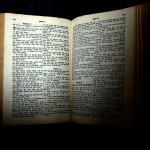How are we to evaluate rituals? What is their symbolic content? What clues can we look to in order to interpret them?
In one ancient Babylonian ritual (the Akitu festival) taken as archetypal by the Myth and Ritual school, the king of Babylon is ritually humiliated. The king ascends to the prescense of the god (Bel) before the high priest in the sanctuary of the temple. His scepter and symbols of his rulership are removed from him. Then, the priest strikes the king’s cheek, drags him by his ears, and forces him to the ground. Then, the king swears that he did not destroy Babylon or its temple or forget its rites. He is then exalted by Bel, and his scepter is returned to him.
What is meant by this strange humiliation of the king? What are the operative symbols here? Some have seen a symbol of the king as a dying and rising figure, one who is innocently beaten, but then restored to glory. Others have seen a substitionary expiation in this ritual, where the king suffers on behalf of his people. Others have seen it as a reenactment of the creation myth.
But what about the king’s oath concerning things that he has not done? How does this fit into the ritual? If one restricts the analysis of the ritual to heavenly archetypes, one misses the political significance of what is happening. Why would the king of Babylon be asked to affirm that he has not destroyed the city or the temple? Why would a native king of Babylon do such a thing? He wouldn’t, but then again not all kings of Babylon were natives, and those foreign kings actually did destroy the city and the temple. In this ritual, the king is warned of what will befall him if he fails to protect the city. If the present king acts as the foreign kings had, he will be accountable to the gods. The ritual is nationalist propaganda. The ultimate concern is neither with the mythical past, nor the ideal future, but with the present.
How can attention to political history of the 19th c. illuminate our own temple rituals? It is certainly the case that earlier iterations of temple rites were more explicit (at least to later readers) about the political situation that motivated them, including the forced migration, assassination of Joseph Smith, secrecy and polygamy, and theocratic aspirations. Further, what does the evolutionary abandonment of these symbolic gestures suggest about the 20th c. political context of sacred ritual?
Awareness of the historical context helps to explain the ritual in a way that belief in a universal symbolic cannot precisely because such a symbolic system is taken to be essentially ahistorical. Symbols come to mean something, and have power, because of the historical conditions that give them meaning and power. Our analysis of our religious symbols only makes sense if we erase the imaginary line between symbols and political context.











